|
|
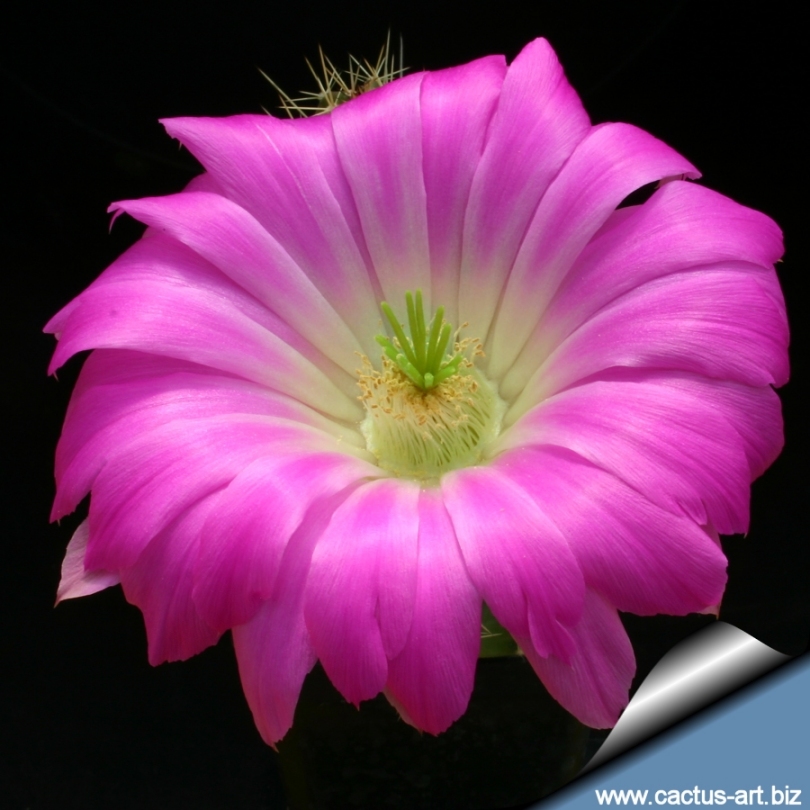
E. leonensis has spectacular magenta flowers with white or pale yellow
throats, for a short period in spring. Although the display lasts only a
week or two, the profusion of pink flowers is extremely striking. The
pink blossom reaches 7-12 cm in diameter.
|
|
|
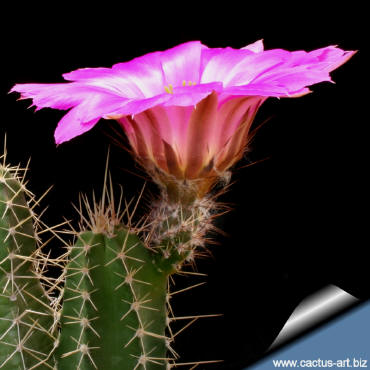 Description:
E. leonensis is a clumping, erected or semiprostrate cactus. Description:
E. leonensis is a clumping, erected or semiprostrate cactus.
Stems: 2.5-3 cm in diameter, up to 30cm tall; 6 to 8 ribs with
low tubercles;
Spines: 0 or 1 central spine; 6 to 9 short brown spines.
Flowers: 7-12 cm long pink-magenta with white o pale yellow
throat. Stigma is green.
Fruiting: 3-4 months after flowering
Fruits are green with white pulp.
Cultivation: This
cactus is is among the easiest species to grow, flower and propagate.
Indicated for full sun
Exposure, water regularly from march to October, rot prone in winter,
needs good drainage, It needs
to be kept in a cool place during winter rest (can
briefly tolerate temp. as low as -7°C)
Without this cool winter period they normally wont get many
buds. Cascading, clustering, Great for a
hanging display. Stems may possibly become purple and limp in winter but
revitalize in early spring. |
| |
|
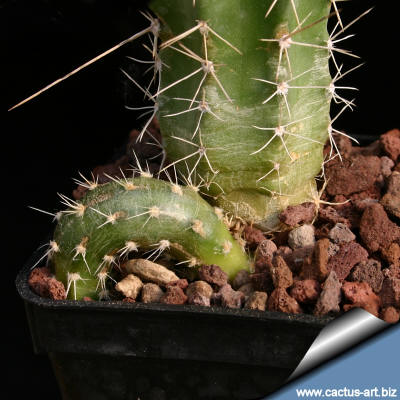
This species produces basal
stolons |
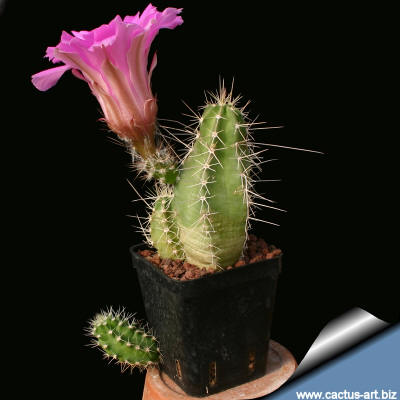
a suker (from an underground stolon) is coming out from
the pots hole. |
SUBSPECIES:
- Echinocereus pentalophus subsp.
pentalophus: has stem that can be either prostrate or erect
having 3 to 5 ribs and 3 to 7 spines per areole. It is the most
common. The stems are slightly thicker and lighter green than the
subspecies 'procumbens'.
- Echinocereus pentalophus subsp.
Leonensis: has erect stems with 6 to 8 ribs and up to 9 spines
per areole and is thicker than the other subspecies.
- Echinocereus pentalophus subsp.
Procumbens: has stems that are semi-prostrate and thinnest of
all the subspecies; a deeper green in color; with 4 to 5 ribs and 5 to
7 spines per areole.
The flowers on all subspecies are Bright pink &
magenta with white or yellow throats. |
|


Advertising
|
|
|
|
|
Family:
Cactaceae (Cactus
Family) Echinocereus pentalophus
v. leonensis (Mathsson) N.P. Taylor.
Scientific name:
Echinocereus pentalophus
(DC.) Lemaire.
in:
Cactées, 56 (1868) |
|
|
Origin: Mexico (Hidalgo, Queretaro, E Guanajuato, SE
Coahuila, Nuevo León, San Luis Potosí, Tamaulipas).
Conservation status: Listed in
CITES appendix 2
|
Synonyms:
- Echinocereus blanckii v. leonensis
(Mathsson) Bkbg.
- Echinocereus pentalophus v. leonensis
(Mathsson) N.P. Taylor.
- Echinocereus leonensis Mathsson
|
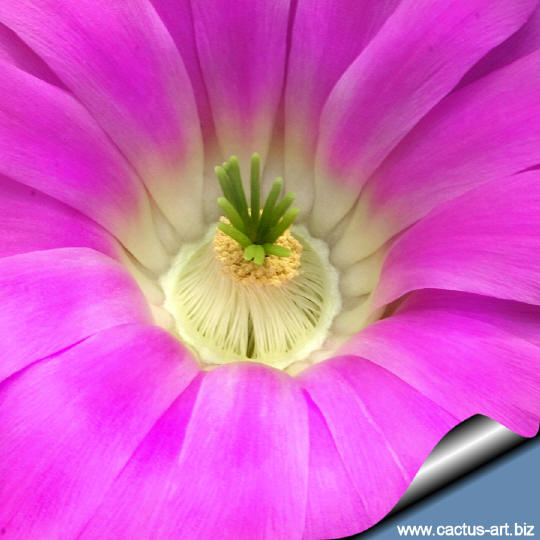 |
|
Echinocereus leonensis steadily produces secondary growths by
means of underground or surface
stolons (like Agave, Sempervivum, etc.) and
forms rapidly large clumps.
|
|
|
|
|
Propagation: Seed, but the
as stems of this cactus branches readily and soon forms a mass of shoots
the simplest way to propagate it is to cut a piece of a
stem (or of a
stolon) in summer,
let it dry for a couple of days, and pot it up.
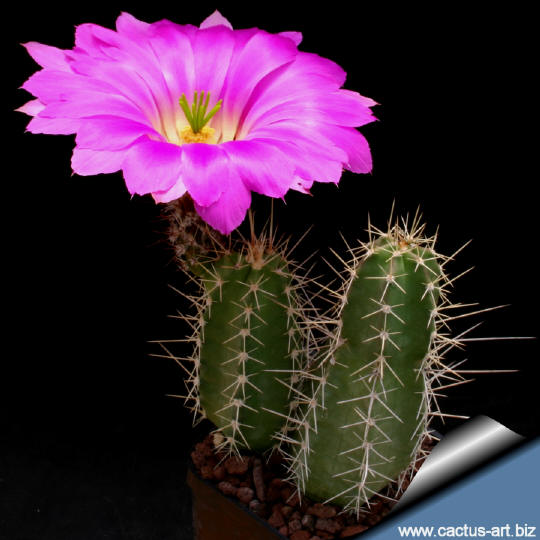
Photo of conspecific
taxa, varieties, forms and
cultivars
of
plants belonging to the
Echinocereus pentalophus
complex
(This
Taxon has lots of
synonyms (like most Echinocereus) with several
controversial varieties and subspecies):
|
|